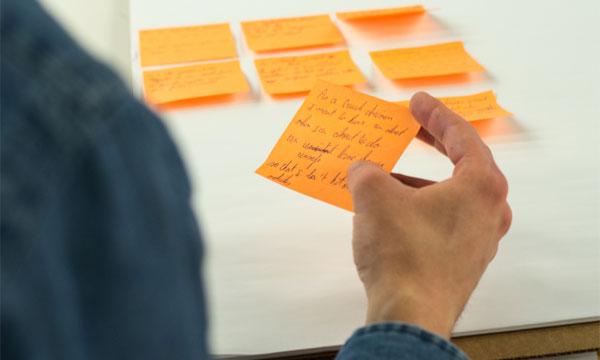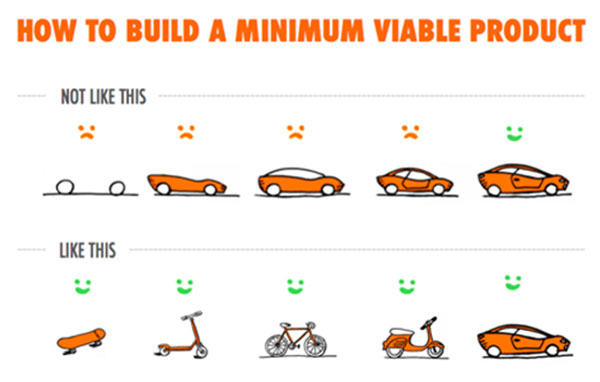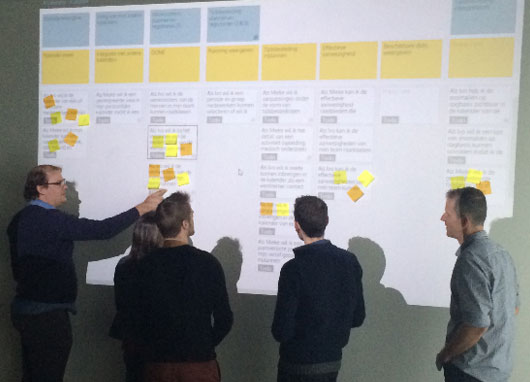
Every business model is under constant pressure. Pressure by customers, to provide an even better service. Pressure by competitors, searching for their differentiator to challenge your product. And, especially nowadays, pressure in a world where digital is the new normal.
A lot of companies realize that they have to create an ecosystem for innovation within their organization. Moreover, they need to join forces with their customers and suppliers to make true leaps forward.
Incremental innovation
Some time ago, Attentia asked us to organize an Innovation Lab together. It was a great idea, but it quickly became clear that the label “Innovation Lab” by itself was food for thought.
It all starts with the question “What is innovation?”. Hearing that word, everyone starts dreaming about radical success stories like Uber, Facebook or Instagram. However, most people don’t realize that innovation is actually dominated by incremental innovation.
In incremental innovation, the focus is not on breakthrough business model changes, but on significantly enhancing current products or services. Both approaches can be accelerated by an Innovation Lab, but the goal remains the same: to allow experimenting and to detect business value by testing early on.
Think outside-in to realize your vision
The Innovation Lab became real as a two-week sprint with a dedicated and mixed team. It wasn’t business as usual for this team: we had diverse profiles participating (from Product Owner and Front End Engineer to UX designer), there were no specific processes to follow, no rules about specific technology and no fixed goals or deliverables set forth beforehand.
Except for maybe one: to build a prototype that matches the future vision of Attentia: empowering their customer’s employees.
The full focus of the Innovation Lab (obviously) had to be on ‘Mieke’, who was the incarnation of the persona for whom we were building a view on the Attentia services.
Those services are diverse and often very distinct as Attentia delivers a broad range of HR services: payroll, external service for prevention & protection, social insurance, child benefits, social security etc.
Plan ahead by making an Impact Map
Attentia had successfully moved past the vision (‘focus on Mieke’) and idea generation phase by the time my colleagues and I were involved in the project. The theme of the Innovation Lab was a ‘Kalender’ project (Calendar) that would start quickly, but was still dealing with lots of uncertainty.
As the ‘Kalender’ idea was already generated, we started to explore and structure the different views linked to this idea by creating an Impact Map together with Marketing, Sales, Services and IT during our the first day of our workshop.
Two constantly changing teams expanded the various elements on the map (from left to right) and challenged each other to come to one joint Impact Map. Using the Impact Map, we linked the expected business value with the personas (i.e. ‘Mieke’), how they are impacted and what features the new product should support. We focused on the Minimal Viable Product (‘Mieke’s skateboard’), NOT on exploring all features of the ‘Kalender’.
The second day of the workshop we focused on creating a story map to fine-tune the features listed on the Impact Map, on balancing everything and on getting the story map validated. Again, we divided the group in two teams and focused on the persona of ‘Mieke’ when formulating user stories on post-its. Of course, we needed to invest a big part of the day in clarifying the terminology used by creating a common glossary.
After those two intensive days of workshops we had our mental picture of the ‘Kalender’ idea (Impact Map) and the prioritized and validated user stories of ‘Mieke’ to start off our first week of the Innovation Lab.
During that week, we started by drawing wireframes on flipcharts to visualize the user stories. By linking them to the user stories and as such to the impact map, our business stakeholders were able to keep pace with our Innovation Lab, even before the ‘classical’ sprint review at the end of the week. On our demo we showed one screen in the app (having tackled some technical issues) and we told Mieke’s story by way of clickable wireframes. Then, we got a 'real Mieke' to do user testing based on those wireframes.
During the second week of our Innovation Lab, we explored the user stories for another persona of our impact map, ‘Ivo’.
Validate as soon as you can
As soon as we start building an IT-product, we tend to start checking each and every assumption beforehand. For example, analytics can provide you with key insights about your customer segmentation while a good City Map makes sure you have a clear understanding of your ecosystem.
While all of these techniques are valuable, none of them should lead to analysis paralysis. As uncertainty is rises, it becomes much more difficult to cover all aspects just by analyzing. Therefore, bring your product to market as early as possible, even if you did just hack everything together. Who says you really need a working prototype? Why wouldn’t clickable wirefames work already?
Takeaways
- Think MVP: build a skateboard, not a bike, and especially not a Tesla. Not just yet.
- Move beyond what you think users do and learn what users actually do.
- “If you are not embarrassed by the first version of your product, you’ve launched too late.” (Reid Hoffman)
Want to discuss how we can help your organization create innovative services? Come and grab a coffee.
Special thanks to Valerie Taerwe for helping put together this post.








